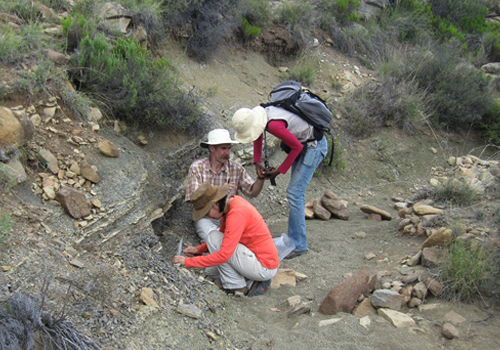Of the mass extinctions that have punctuated the history of life on Earth, none was more catastrophic than the “Great Dying” that occurred at the end of the Permian period 250 million years ago.
It is estimated that 70 per cent of land-dwelling species and 90 per cent of marine species disappeared. More species were lost than in the mass extinction that wiped out the dinosaurs 66 million years ago.
For decades, the scientific consensus was that the end-Permian extinction was a single, global dying off that played out on land and in the oceans over a relatively short period of time. It was also thought to have happened in the northern and southern hemispheres at the same time and that it had been triggered by a million-year long period of intense volcanism in Siberia.
But recently, a team of scientists has revised the sequence of events with unprecedented accuracy and shown that the crisis on land took place some 300,000 years before the extinction in the oceans.
“We have placed precise age constraints on the event on land,” says geochronologist Sandra Kamo, an assistant professor in the Faculty of Arts & Science’s Department of Earth Sciences and director of the Jack Satterly Geochronology Laboratory. “We now know that the extinctions on land and in the oceans didn’t happen at the same time."

The revised chronology may be a clue that the demise of terrestrial and marine species played out differently on land and in the oceans and had different causes.
According to Kamo’s co-author, paleobotanist Cindy Looy of University of California, Berkeley, “The fact that the big changes were not synchronous in the northern and southern hemispheres has a big effect on hypotheses for what caused the extinction. An extinction in the ocean does not, per se, have to have the same cause or mechanism as an extinction that happened on land.”
The team included Kamo along with collaborators from Colby College, the Council for Geosciences in South Africa, University of New Mexico, University of California at Berkeley, University of Texas and Amherst College. They published their results in March in the journal Nature Communications.
The researchers rewrote the terrestrial extinction timeline using a multi-disciplinary approach to examine the time immediately before and after the end of the Permian and what had been considered the beginning of the Triassic periods.
Their research focused on a region in South Africa called the Karoo Basin. The layers of rock exposed on the sides of hills and escarpments in the region document hundreds of thousands of years of geologic history that encompass the Permian extinction. Millions of years ago, the basin was part of Gondwana, the southern half of the super-continent Pangea that eventually broke up to the continents we see today.
Members of the team looked at the fossil record of land plants, pollen and vertebrates which revealed one part of the geochronological puzzle: the disappearance and emergence of certain species.
Others team members examined evidence in the layers of rock laid down during the extinction, including minerals which captured changes in the polarity of Earth’s magnetic field over geological time. Minerals in different layers indicated when the planet’s north and south magnetic poles reversed — another piece of the puzzle.
But the most precise determination of age — an absolute age which served as an anchor for the other estimates and relative ages — came from the work of Kamo and her colleagues in the geochronology lab at U of T. The precise rock-dating done in the lab has contributed to research that spans billions of years of history of Earth and — through the dating of meteorites — the solar system.
Kamo and her team examined zircon crystals she had retrieved from a layer of volcanic ash in a Karoo Basin hill that were deposited more than 250 million years ago.
Zircon is an invaluable and highly accurate geological timekeeper. When zircon crystals form in molten volcanic rock, they contain uranium but no lead. As time passes, the uranium slowly decays into lead at a precisely known rate. The age of the crystals is determined by measuring the ratio of uranium to lead.
“In combination with our understanding of what's happening in the plant and vertebrate fossil record and in the geologic and magnetic record,” says Kamo, “the age as determined by our lab places all of that information into its proper chronological context showing that the land and marine extinctions didn’t all happen at once.”

